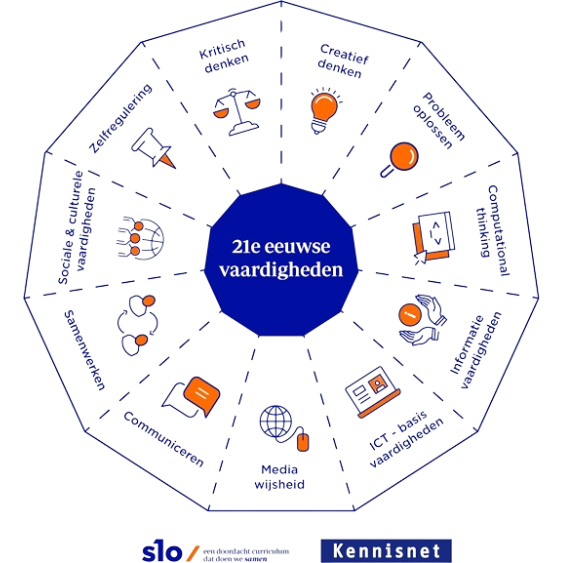21st century skills in practice!

21st century skills: the key to future-proof education
Teachers are on the eve of a challenging and exciting educational transformation. The world is changing rapidly, and our job is to prepare students not only for today’s world but also for tomorrow’s. This requires a revision of our educational model, with 21st century skills at its core. But why are these skills so crucial, and how can we effectively integrate them into our teaching? Together, let’s dive into the importance of 21st century skills and discover how they can transform our education.
Why 21st century skills?
In a world characterized by technological progress, globalization and continuous change, traditional methods of education are no longer sufficient. Our students need skills that equip them not only with knowledge, but also with the ability to think critically, solve problems creatively, communicate effectively and collaborate. In short, skills essential for success in the 21st century.
The Secret Behind Effective Integration
How can we make this shift to a focus on 21st century skills? The answer lies in applying Robert Cialdini’s principles of persuasion:
- Reciprocity: Offer your students something of value before you ask something of them. For example, start with project-based learning that touches their area of interest.
- Scarcity: Emphasize the uniqueness and limited availability of certain knowledge or skills to stimulate interest and motivation.
- Authority: Position yourself as an expert by constantly acquiring new knowledge about 21st century skills and communicating it enthusiastically.
- Consistency: Integrate these skills consistently in all lessons so that students begin to see and appreciate their relevance.
- Sympathy: Show that you understand what students need to be successful in the modern world by using relevant examples and anecdotes.
- Consensus: Involve other teachers in this process to express a common vision; together we are stronger.
How do you implement these skills?
Critical Thinking & Problem Solving Ability
- Put real-world problems at the center of project work.
- Ask students regularly about their reasoning process.
Creativity & Innovation
- Provide room for experimentation within project work.
- Praise original ideas during class discussions.
Collaboration & Communication
- Foster teamwork by assigning group projects with diverse roles.
- Practice presentation skills through peer reviews or public presentations.
- “Through collaboration, great things are achieved.” – Helen Keller
Digital Literacy
- Actively involve technology in teaching and learning (think apps or online platforms).
- “In the digital world, technology is no longer an extra; it’s a necessity.”

Investing in 21st century skills means investing in the future of our young people. As a teacher, you have the power to impart not only knowledge but life skills that help students flourish in every aspect of their lives. By applying Cialdini’s principles, we create a learning environment that not only inspires but also motivates. Together, let’s embark on this journey toward innovative education where every student can develop to their full potential for tomorrow’s challenges. Let us act together toward this noble goal!



